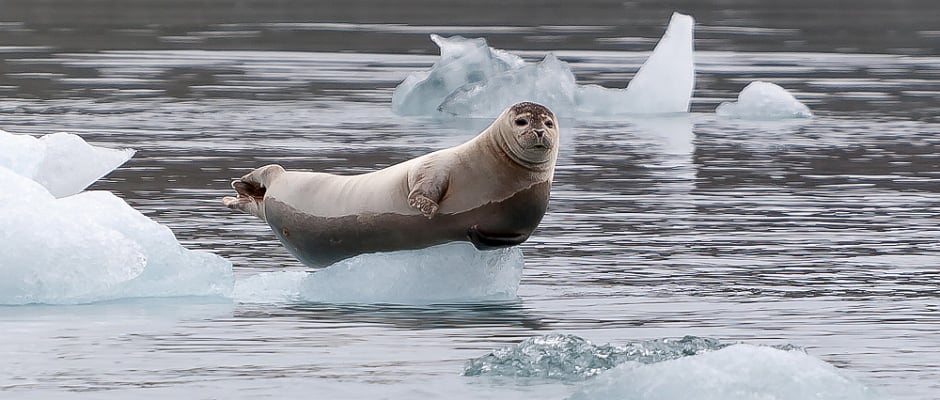Share this article
Record Amount of Critical Habitat Proposed for Ringed Seals
The National Marine Fisheries Service (NMFS) announced last week its proposed critical habitat designation for the Arctic subpopulation of Ringed Seals (Phoca hispida hispida). The estimated 350,000 square mile designation would be the largest ever for an endangered or threatened species. Most of the critical habitat would be in the Arctic Ocean and the Bering, Beaufort, and Chukchi seas off of Alaska’s coastline.
The expansive proposal encompasses such a large area because of the effect that warming oceans have on sea ice that ringed seals completely rely on for every aspect of their lives. According to NMFS, ringed seals “use sea ice as a [place] for resting, whelping (birthing), nursing, and molting” and “do not normally come ashore.” Any change in the amount or pattern of sea ice formation will have a magnified effect on the population.
NMFS originally listed the Artic seal as threatened in late 2012, but delayed designating critical habitat due to a lack of data.
Ringed seals are the smallest seal species in the Arctic and are distinguished from other seals by silver rings on their backs and sides. The Arctic subpopulation can be found in many Alaskan seas and in the Artic Basin wherever sea ice is present.
Sources: Environment and Energy News (December 2, 2014), Federal Register (December 3, 2014)
Header Image:
An Artic ringed seal gets comfortable on floating sea ice. The National Marine Fisheries Service has proposed a critical habitat designation that covers much of the Alaskan seas.
Image Credit: Sven Roeder








